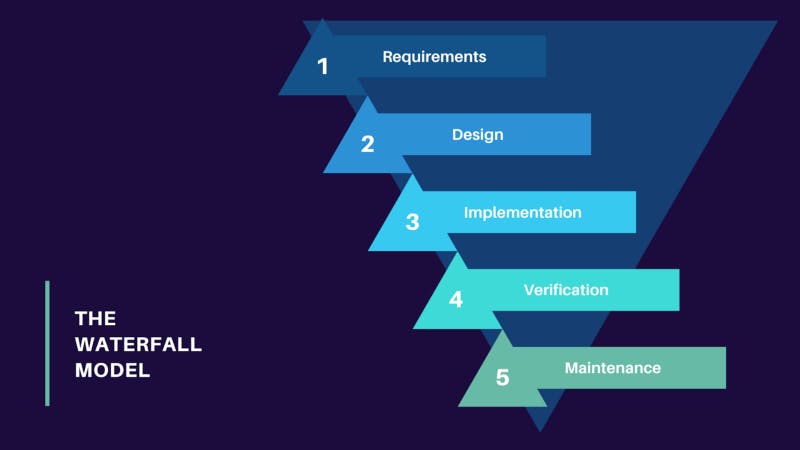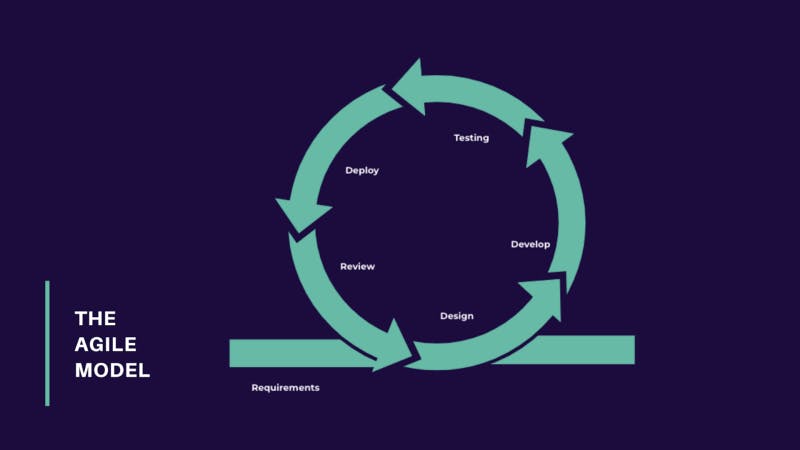“SDLC stands for software development life cycle”. It refers to the process of delivering software to a client from end to end. It includes every part and step of the process, right from the ideation to the delivery and sometimes even the maintenance of the software.
Here’s what we are going to talk about in this article:
Right from the time when the Information Technology revolution started, software developers have played an important role in the world. However, the working technique and common practices evolved constantly and shaped themselves into a more organized and efficient workflow process. The methods were improvised in aspects of hardware, tools, and even organizational methodology.
One such workflow process which has evolved over time is the Software Development Life Cycle. The development process for software is often overlooked and underestimated in terms of complexity. It is just like any product developed over a series of steps starting from ideation.
This idea evolves into a plan, the plan evolves into a document, a blueprint, a prototype, and finally, into a developed product. This entire series of developments is simply called a Software Development Life Cycle (SDLC).
“The process of developing software is never-ending”. Even a person with remote experience in the field of software development can easily point out that the first release of the software will never be the last. It is a common depiction to receive error reports and complaints from users regarding software crashes and glitches.
As Benjamin Franklin rightly said, “If you fail to plan, you are planning to fail”. A plan is everything when you are building an elaborate product, such as software, from scratch. SDLC acts as that plan for you throughout the software development process. It contains all the components for planning, developing, and delivering a product with the minimum amount of errors.
Here’s an example of how the project would start off without compliance with an elaborate SDLC. The developers will not be aware of which features to code, and there will be no metrics for project managers to measure the progress of the product building. The strategic level team will not have a fixed goal or ideal KPI in mind.
This is the gap that an SDLC process fills. It helps in achieving:
- A shared language and shared goals to achieve
- Well-defined communication channels within all the departments to create a smoother information flow
- Defined roles and responsibilities for each and every member down the ladder
- Inputs and outputs from one step to another to decide a qualifying factor
- Deciding factors to clear out the scope of work from one stage to another
Phases of Software Development Life Cycle:
This phase is all about product development and project management. It includes but is not limited to:
- Resource allocation — Team and equipment planning
- Capacity planning
- Establishing timeline
- Costing and Estimation
- Provisioning
The common practice is for individual team managers to coordinate with the project managers to ensure all perspectives are clearly established.
The end deliverables should ideally contain:
- Project Plan
- Scheduled timeline (Tentative)
- Cost Estimation
- Procurement requirements
One of the mandatory steps is for the executive team to communicate with individual team managers to clarify and establish requirements for the project to be completed. This information is also gathered from the business stakeholders and subject matter experts (SMEs)
Product managers, architects, and the development team coordinate with the SMEs to document the business process. The end deliverable in this phase of the SDLC process is a document that lists the requirements for a waterfall project.
Once the requirements are established, software developers and architects start working on the project design with an established deadline in concern. These designs are created with the help of established processes that help clearly define an efficient design for the type of project in question. Sometimes the design is sourced from an existing external database such as the Open Group Architecture framework.
The developers use design patterns for Elements of Reusable Object-Oriented Software to code their way around algorithmic problems with consistency. Some might even follow a methodology of rapidly developing multiple prototypes (also known as spike methodology)
Here is where the major component of the execution of the project begins. This phase involves the actual coding for the software itself. The project can either be created in sprints/AGILE methodology (rapid quick experiments) or as a waterfall (continuous efforts) approach.
Regardless of the methodology involved in developing the software, the ultimate goal of this phase is to create functional software to push for further testing. A best practice for this phase is to involve business stakeholders to ensure their expectations are met.
The end deliverable of this phase is functional software ready for testing.
Testing is one of the most crucial phases of software development. It is impossible to push software for usage without testing since the scope for human error is unlimited in the world of software development.
Constant QA is necessary to ensure the product is perfect in terms of quality and efficiency. Different types of testing include:
- Code QA ( Quality Assessment)
- Unit testing (Functional testing)
- Performance testing
- Integration testing
- Security testing
Pro tip: The best way to cut down efforts and time spent on testing is to automate them. Multiple tools like testgrid.io help provide an efficient way to automate tests with no compromise on the end output.
The output of this phase is software that is ready for deployment after all necessary steps of testing.
Once the testing attains positive results, the software is deployed for consumers or users. Generally, this phase of SDLC is often automated, but since deployment can be complex, developing teams need to be careful.
More time and effort may be needed since many devices and systems need to be integrated. Application Release Automation tools are often used in medium and large enterprises to launch the product in appropriate environments.
The end goal of this phase is to release the product with fully functional software.
Some call it the “end of the beginning”. The Software development life cycle doesn’t conclude here. After the release, the software must be monitored closely to observe user behavior patterns and engagement rates to look for opportunities for improvement.
Ideally, bug fixes should be fixed and finalized again. However, a brief process must be put in place to ensure no amount of regression happens.
SDLC has two extremely popular functioning models. One is known as the waterfall model, and the other is known as AGILE. Here’s how each of them works

The waterfall method of software development pursues a pre-determined process by way of phases (similar to the SDLC model). It is a traditional method which has evolved purely from engineering. Although the waterfall method is known as a flawed method, multiple organizations follow it across the world, even for larger projects.
The waterfall methodology involves an elaborate phase of designing and planning. The idea is to build a strong foundation for what they are going to build upon. This is followed by developing the software and then pushing it for further testing and then deployment.
The popular belief is that the waterfall methodology is rigid due to its lack of flexibility to accommodate changing requirements. The lack of flexibility is exactly the gap that Agile bridges.

The agile model was initially a manifesto drafted and signed by a group of senior software developers. The contrast between the agile and waterfall models of the software development life cycle is very evident. It is built to accommodate flexibility in the development process.
It addresses the key problems identified in the waterfall approach that caused challenges in optimal delivery. It defines a waterfall as a one-way road that does not allow room for uncertainty. The focus areas for the agile model include teamwork, feedback loops, and rapid prototyping.
As the world advanced, multiple variants of the agile approach have originated. Some of the popular ones include the Scrum and Kanban models. Teams following the agile approach often mix and match with both to create an efficient process that is the best fit for them.
Regardless of the approach used, the Software development life cycle leaves room for errors. Following certain practices can reduce the risks and increase the chances of success. Here are a few best practices for SDLC:
The importance of source control is best recognized by development teams who prioritize minimization of risk. Establishing a central source control repository ensures that the code is gathered in a single area. If a developer workstation or file server fails, the central repository acts as a backup.
The purpose of Continuous integration is to automate the tedious process of writing thousands of lines of code and then to integrate them. CI automates the entire process from end to end and alerts the developers in case of any errors. Following this process prevents errors and defects from spreading into the software.
You probably know by now that the SDLC process is an elaborate one that needs humongous amounts of effort to plan, track and evaluate. To solve this problem, certain software has emerged to manage the SDLC process. The features include work management, bug tracking, and performance analytics. This software smoothens the process of decision-making and tracking.
Every great project was once an idea. The road from the idea to the end deliverable is tough and uncertain. The only roadmap to navigate through this path is a Software Development Life Cycle.
The Software Development Life Cycle of an application or system continues, with updates and new features, until the day it is decommissioned or replaced. Multiple approaches are formed around an efficient SDLC process. Waterfall methods are still common, though Agile is rapidly pulling ahead. There is no perfect method, but it’s far better to use some method than none.
Read Also: Everything You Must Know About SDLC Automation and Its Benefits

Originally published at testgrid.io on January 7, 2023.

